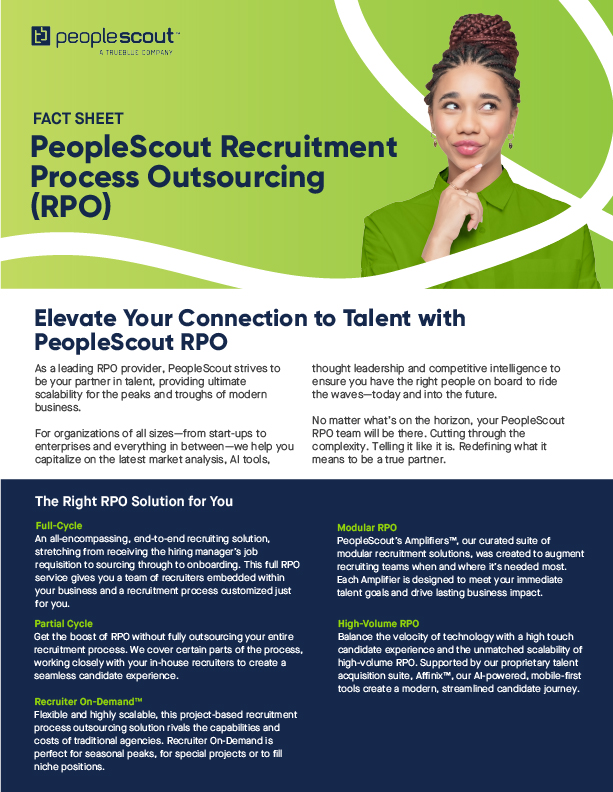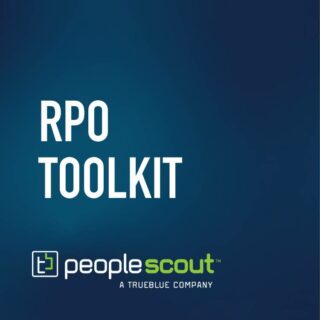With top talent as elusive as ever, finding and attracting exceptional candidates has become increasingly challenging. Talent sourcing has emerged as a critical function in addressing an organization’s workforce needs, regardless of company size or industry. From start-ups to global enterprises, implementing effective talent sourcing strategies is essential for staying ahead in the race for top-tier professionals and ultimately driving organizational success.
This article will guide you through talent sourcing, from understanding its importance to overcoming common challenges. We will explore how outsourcing can significantly improve your talent sourcing outcomes.
What is Talent Sourcing?
So, what is talent sourcing exactly? It involves the proactive identification and attraction of qualified candidates for specific roles within an organization through various channels such as job boards, social media platforms, professional networks and talent databases. By proactively engaging with potential candidates, talent sourcing helps build a strong pipeline.
The key objectives of talent sourcing are:
- Identifying high-potential candidates who aren’t actively job hunting
- Creating a talent pipeline for future needs
- Improving the quality and diversity of your candidate pool
- Reducing time-to-hire and cost-per-hire
In a talent market in which skilled professionals are in high demand, talent sourcing is a must in order to engage with qualified talent.
Talent Sourcing vs Recruiting
Now, before you start confusing talent sourcing with its cousin recruitment, let’s clarify the difference. Traditional recruitment often relies on posting job ads and waiting for applicants. In contrast, talent sourcing involves actively searching for candidates through various channels such as social media, professional networks and online platforms. Talent sourcing emphasizes relationship building and engagement rather than merely relying on job postings.
Challenges in Talent Sourcing
Talent sourcing can present various challenges for organizations looking to attract and hire top talent. You’re up against some formidable obstacles:
- Competition for top talent: One common obstacle in talent sourcing is the competition for qualified candidates. For example, tech and digital skills are in demand across all industries, not just high-tech firms.
- Skill shortages: It can be challenging to find candidates with the specific skills and experience required for the job, particularly if it’s a niche role or in a remote area.
- Managing diversity and inclusion: DE&I in talent sourcing is another important aspect to consider. Many organizations struggle to engage a diverse candidate pool and stay aligned with their recruitment goals.
- Maintaining compliance: Organizations must ensure compliance with applicable laws and regulations. This includes adhering to equal employment opportunity (EEO) laws and maintaining data privacy and protection.
By implementing the right strategies, organizations can overcome talent sourcing challenges and ensure they are attracting the best candidates for their roles.
Benefits of Shifting Talent Sourcing to an RPO Partner
Now, here’s where things get interesting. What if I told you there’s a secret weapon that can help you get ahead? Enter your Recruitment Process Outsourcing (RPO) partner! No longer just for long-term recruitment engagement, RPO offers modular recruiting solutions that provide the agility and expertise to turbocharge your hiring process.
Here are some of the benefits you can experience:
- Scalability: Need to hire 10 engineers this month and 100 next month? RPOs can flex up and down to meet your changing needs fast—and you don’t have to hire any more internal recruiters to make it happen.
- Talent pooling. Rather than relying solely on incoming applications, RPO provides connected talent sourcers who focus on proactive engagement with candidates through social media platforms, industry-specific job boards and professional networks. This helps you tap into a wider pool of candidates, including passive job seekers who may not be actively looking for new opportunities. Plus, we help our clients to build relationships with candidates over time, nurturing them until the right opportunity arises. You find the best fit for a position and free up your internal team to focus on creating a brilliant candidate and hiring manager experience.
- Rapid access to the latest technologies: RPOs are tech-savvy—always up to date with the latest tech. For example, our AI-powered sourcing tool in Affinix™ searches millions of candidate profiles for your requirements in minutes. At PeopleScout, we can also provide recruitment technologies like CRM, ATS, video interview tools, assessment platforms and analytics.
- Talent market insights: With the finger on the pulse of the talent market, RPOs can offer invaluable market feedback to benchmark your talent profiles and refine your talent strategy.
- Showcase your employer brand: Outsourcing your talent sourcing significantly contributes to your employer brand by highlighting your unique employee value proposition (EVP). An RPO partner can showcase the benefits and perks of working for your organization, such as career development opportunities, flexible work arrangements and company culture.
- Maximize diversity: By implementing inclusive hiring practices and leveraging diverse recruitment sources, an RPO partner actively seeks diverse talent. With experience across regions and industries, RPOs have access to an immense pool of professionals from varied backgrounds.
- Prioritize compliance: It is crucial to understand the legal framework surrounding talent sourcing to mitigate potential risks or legal issues. Partnering with a trusted talent partner can help ensure compliance and minimize legal risks in all the areas you’re hiring.
Effective talent sourcing isn’t just about filling seats—it’s about discovering stars to light up your organization. Whether you’re doing it in-house or partnering with an RPO provider, investing in strong talent sourcing strategies will fuel your company’s future growth.
PeopleScout Talent Sourcing provides the perfect way to boost your recruitment resources, engage with passive candidates and reach your hiring goals faster. Our sourcers act as an extension of your organization’s recruitment team—finding high quality talent, personally engaging them and converting them into applicants. Candidates get a great experience. You get a short or long list of pre-qualified, genuinely enthusiastic applicants ready for interview or assessment.
Talent Sourcing Use Cases
Wondering how you could benefit from outsourcing talent sourcing? Here are some real-world scenarios where we supported clients through our Talent Sourcing solution.
The Niche Specialist
Situation
As a leader in higher education in the UK, a British university was seeking a niche role for their student casework team. Battling a tiny talent pool in their local area, they tried recruiting a Deputy Head of Student Casework on two occasions with no success. The client turned to PeopleScout to help them find the right hire with our Talent Sourcing solution.
Solution
Our strategy targeted individuals who had:
- Previous management experience
- Experience working within higher education including complex student casework
- Knowledge of academic and statutory framework guidelines
With only three other universities nearby, we knew our talent pool would be limited in the immediate proximity for this office-based role. So, we extended our search across the entire UK to find candidates who would consider relocating.
Results
- 46% engagement rate (well above the industry average of 18% to 25%)
- 1 relocation hire made from our short list
👉 Read the full case study
“We are very pleased indeed! Very interesting that all candidates said they weren’t actively looking for a new role, so clearly, we needed to work with PeopleScout.”
Client Feedback
The Great Expansion
Situation
The London Borough of Hounslow, a local government agency, needed to source candidates that shared their values and vision as part of delivering their new Corporate Plan. This large-scale program initially incorporated 19 areas, with more to come in future iterations of the plan. They partnered with PeopleScout for a Talent Sourcing engagement that focused initially on six key job profiles, hiring between 35 and 40 individuals for the corporate Project Management Office (PMO) and the Service Design and Transformation teams.
Solution
Public sector recruitment is often challenging due to competition from other sectors. Because of this, we engaged passive candidates to raise Hounslow’s profile in the market and increase diversity within the talent pools. Our focus was on building brand awareness amongst candidates with backgrounds that matched these niche roles.
We leveraged our Affinix® total talent suite to drive better decisions, to track and monitor the client’s DE&I agenda and to provide a mobile-first candidate experience. Throughout the project, we presented market feedback data and hiring metrics through bespoke dashboards.
Results
- 87% offer acceptance rate
- 65% of candidates hired identified as non-white, boosting diversity outcomes
- 2:1 to interview-to-hire, exceeding the average of 3:1
- 39% engagement rate on LinkedIn
👉 Read the full case study
“PeopleScout were different to other providers I’ve worked with before. What really set them apart is the time they spent listening and understanding what the roles were and what type of people we wanted. The result is that we trusted PeopleScout’s shortlisted candidates, and we filled our roles quickly with talent that met our quality expectations.”
Mike Burch, Head of Service Design and Transformation Programmes, London Borough of Hounslow
Talent Sourcing by PeopleScout
In the grand talent show that is the job market, talent acquisition teams are not just judges—they’re talent scouts, coaches, and sometimes, even magicians, expected to pull perfect candidates out of thin air. Even the best talent acquisition teams need a little extra support to reach their goals! If you’re feeling overwhelmed, PeopleScout is standing by, ready to be your Talent Sourcing ally.
Learn more about PeopleScout Talent Sourcing solution and our other Amplifiers offerings.






